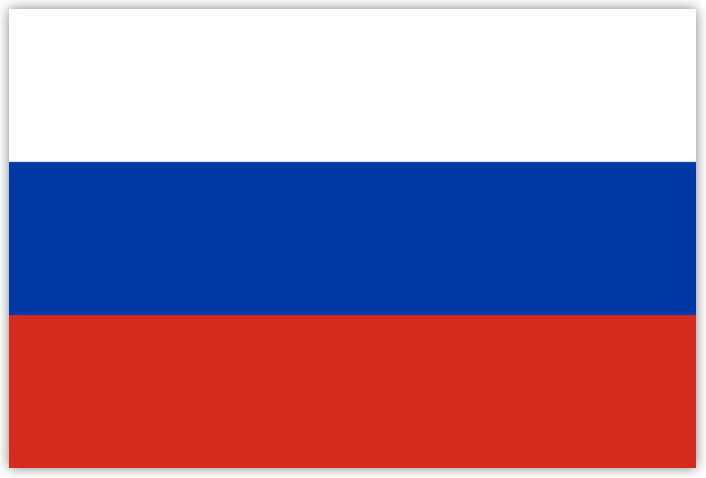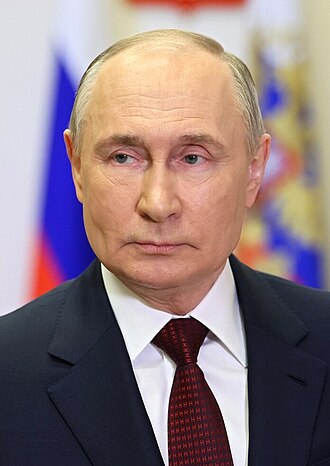Country Name: Russia
Country Flag:

Ancient Civilization: Russia’s history is deeply rooted in ancient civilizations and nomadic tribes that inhabited the vast Eurasian plains for millennia before the arrival of Slavic tribes and Viking traders.
Rise of the Kievan Rus’: In the 9th century, the Kievan Rus’ emerged as a powerful federation of East Slavic tribes, laying the foundations of Russian culture, language, and Orthodox Christianity under the leadership of Prince Vladimir.Mongol Rule and Moscow’s Ascendancy: The 13th century saw the Mongol invasion and subsequent domination of Russia, leading to the rise of the Grand Duchy of Moscow as a centralised power. Ivan III, known as Ivan the Great, expanded Moscow’s influence and liberated Russia from Mongol rule in 1480.
Imperial Expansion: Under the Romanov dynasty in the 17th century, Russia embarked on a period of territorial expansion, annexing vast territories in Siberia, Central Asia, and the Caucasus, becoming one of the largest empires in history.
Bolshevik Revolution and Soviet Era: The Bolshevik Revolution of 1917 led to the establishment of the Soviet Union, a communist state that transformed Russian society, politics, and economy under leaders like Vladimir Lenin and Joseph Stalin.
Collapse of the Soviet Union: In 1991, the Soviet Union dissolved, leading to the emergence of the Russian Federation as an independent state. The 1990s were marked by economic turmoil and political transition as Russia embraced democracy and a market economy.
Putin’s Russia: Since the early 21st century, Russia has experienced a resurgence under President Vladimir Putin, characterised by assertive foreign policy, economic modernization, and challenges to democratic institutions, leading to tensions with the West and internal debates over Russia’s future trajectory.
Moscow
Kaliningrad Time (GMT+2)
Moscow Time (GMT+3)
Samara Time (GMT+4)
Yekaterinburg Time (GMT+5)
Omsk Time (GMT+6)
Krasnoyarsk Time (GMT+7)
Irkutsk Time (GMT+8)
Yakutsk Time (GMT+9)
Vladivostok Time (GMT+10)
Magadan Time (GMT+11)
Kamchatka Time (GMT+12)
Position in world: 1
Total area: 17.1 million square kilometers (6.603 million square miles)
Arable land: 7.5%
Taiga Belt: Siberia’s taiga belt boasts an Evergreen Rainfall climate with dense coniferous forests, abundant year-round precipitation, short mild summers, and long bitterly cold winters, sustaining lush greenery through consistent rainfall or snowfall.
Continental Steppe: Moving southward into European Russia and western Siberia unveils a Seasonal Savannah climate with distinct seasonal shifts: hot, wet summers contrast with drier, colder winters featuring prevalent snow cover, showcasing noticeable temperature and precipitation changes.
Black Sea Coastline: Southern Russia’s Black Sea coastline, including Sochi and Gelendzhik, offers Tropical Coastlines with hot summers perfect for beach activities, complemented by mild winters with occasional rainfall, moderated by coastal breezes for a pleasant year-round climate.
Caucasus Mountains: The Caucasus Mountains region exhibits a Southern Subtropics climate, characterized by rugged mountains, deep valleys, and alpine meadows. Pleasantly warm summers attract outdoor enthusiasts, while cooler winters, with occasional snowfall, enhance the picturesque landscape, supporting diverse flora and fauna year-round.
Russia is a federation comprised of 85 federal subjects, including 22 republics, 9 krais, 46 oblasts, 3 federal cities (Moscow, Saint Petersburg, and Sevastopol), 1 autonomous oblast, and 4 autonomous okrugs.
Please note that the status and boundaries of federal subjects may change over time due to administrative reforms or other factors
Flooding Frenzy: Russia’s vast river systems and extensive low-lying areas are prone to flooding, exacerbated by spring thaws and heavy rainfall.
Arctic Freeze: Northern regions experience harsh winter conditions, with extreme cold, ice storms, and blizzards posing risks to infrastructure and livelihoods.
Wildfire Wrath: Siberia and other forested areas face annual wildfires, intensified by hot, dry summers and human activity, threatening ecosystems and air quality.
Permafrost Peril: Thawing permafrost in northern regions destabilizes infrastructure, leading to sinkholes, landslides, and structural damage.
Seismic Shocks: Russia’s vast territory spans multiple seismic zones, making it susceptible to earthquakes, particularly in regions like Kamchatka and the Caucasus.
Industrial Hazard: Polluted waterways and industrial accidents pose environmental risks, affecting public health and ecosystems, particularly in heavily industrialised areas.
Russia has a territorial sea extending 12 nautical miles (nm) from its coastline, and it also maintains an Exclusive Economic Zone (EEZ) extending 200 nm from its coastline. Within this EEZ, Russia has exclusive rights to explore and manage natural resources, including fisheries and hydrocarbons.
Power Structure: Russia operates as a federal semi-presidential republic, where power is distributed between the president, the prime minister, and the Federal Assembly. The president serves as the head of state and the prime minister as the head of government, with the president wielding significant executive authority.
Political Plurality: Russia’s political landscape is dominated by a few major parties, including United Russia, the Communist Party, the Liberal Democratic Party, and A Just Russia, alongside numerous smaller parties. While United Russia has historically held a majority in the Federal Assembly, smaller parties also play significant roles, particularly in regional politics.
Presidential Authority: The president of Russia is elected by popular vote and can serve a maximum of two consecutive terms. The president appoints the prime minister, who must be approved by the State Duma, and has the power to dissolve the Duma and call for new elections if necessary.
Regional Autonomy: Russia’s federal structure grants significant autonomy to its constituent regions, known as federal subjects, allowing them to govern certain aspects of their affairs, such as education and culture. Regional governors are appointed by the president but are accountable to both the federal government and their constituents.
Political Ideologies: Russia’s political landscape encompasses a range of ideologies, from pro-government and nationalist factions to liberal and oppositional movements. While United Russia is associated with the ruling government, opposition parties advocate for political pluralism, civil liberties, and democratic reforms, albeit facing challenges such as limited media access and restrictive electoral laws.
Allies
Russia’s expansive territory, abundant natural resources, and geopolitical significance establish it as a prominent player both regionally and globally. Examining its geopolitical landscape entails considering its relations with neighbouring countries, involvement in regional partnerships, and key international alliances.
China: Russia’s relationship with China is characterised by deepening economic ties, particularly in energy and trade sectors. However, concerns over China’s growing influence in Central Asia and the Russian Far East persist, shaping the dynamics of their partnership.
United States: Despite geopolitical tensions, Russia maintains diplomatic and economic ties with the United States, although differences in trade policies and foreign affairs occasionally strain the relationship. Both countries engage in dialogue on global issues such as counterterrorism and nuclear non-proliferation.
European Union: The European Union (EU) is a significant economic partner for Russia, with extensive trade and investment ties. However, geopolitical conflicts, including disputes over Ukraine and energy security, have strained relations, leading to economic sanctions and diplomatic tensions.
BRICS Group: As a founding member of the BRICS group, alongside Brazil, India, China, and South Africa, Russia collaborates with other emerging economies to foster economic cooperation and advocate for reforms in global governance structures. The BRICS platform provides Russia with opportunities to diversify its diplomatic engagements and challenge the dominance of traditional powers in international affairs.
Government Type: Federal semi-presidential republic
President
Vladimir Vladimirovich Putin

(President: 2000-2008 and 2012-present)
Prime minister
Mikhail Vladimirovich Mishustin

(Prime Minister: 2020-2024)
United Russia – Center-right
Communist Party of the Russian Federation (KPRF) – Left-wing
Liberal Democratic Party of Russia (LDPR) – Right-wing
Elections: 6 years
Upcoming elections:
2030
Bilateral Partnerships: Russia prioritizes strong bilateral relationships with both traditional allies and emerging powers, aiming for a balance of power in global affairs.
Strategic Partnerships: Russia fosters strategic partnerships with countries such as China, India, and Brazil, focusing on economic cooperation, security alliances, and diplomatic coordination on key global issues.
Multipolar World: Russia advocates for a multipolar world order, opposing unilateralism and promoting a system where multiple powers share influence and responsibility in international affairs.
Size in the world: 11th
GDP: $2.24 trillion (USD)
GDP per capita: 15, 270. 71 USD (2022)
Currency: Russia Rubbel (RUB)
Dominant Economic Sector: Energy
Market type: Mixed economy
Social Landscape
Population: Approximately 145 million
Position: Class distribution
Upper Class: Approximately 10-15%
Middle Class: Approximately 50-60%
Lower Class: Approximately 30-40%
Gini Coeffcient
40 (where 0 represents perfect equality and 100 represents perfect inequality)
Language
Official language: Russian
Other languages: Tatar, Ukrainian, Bashkir, Chuvash, Chechen, Armenian, Azerbaijani, Ingush, Kabardian, Kalmyk, Mari, Mordvin, Ossetian, Yakut
Religion
Dominant religion: Russian Orthodox Christianity
Other religions: Islam, Buddhism, Judaism, Protestant Christianity, Catholicism, Hinduism, Sikhism